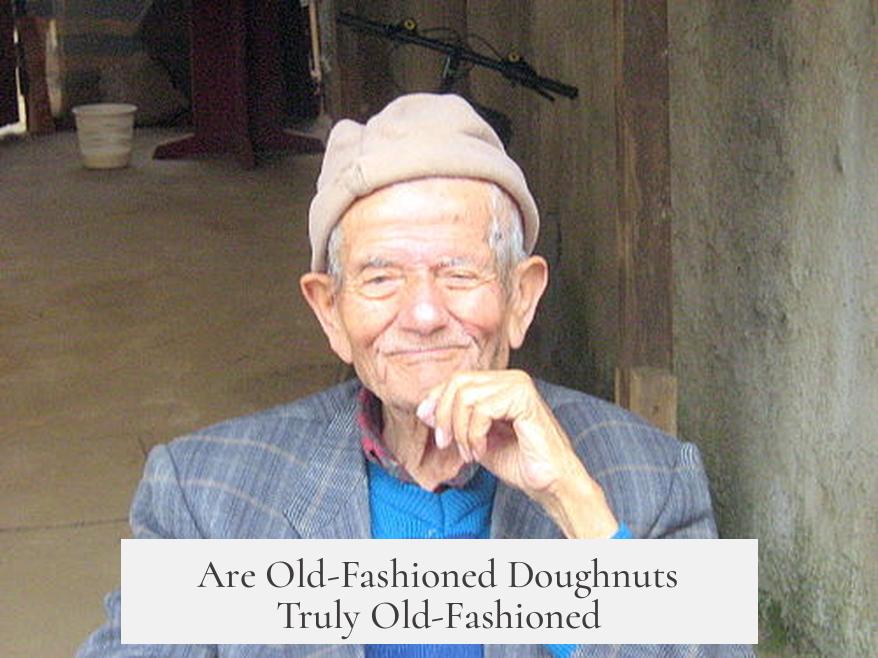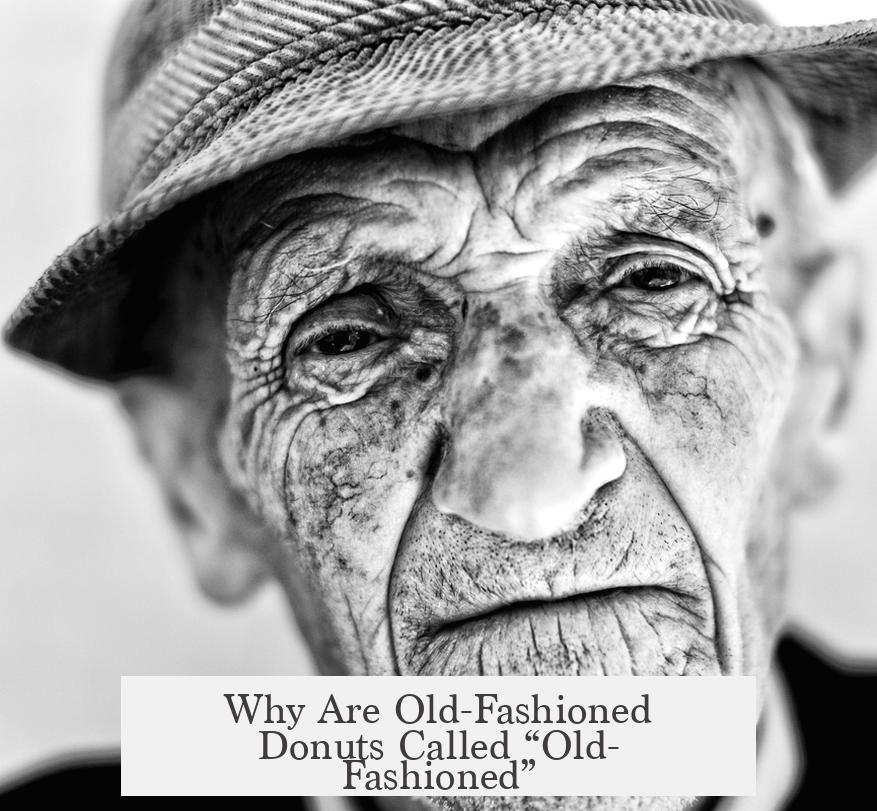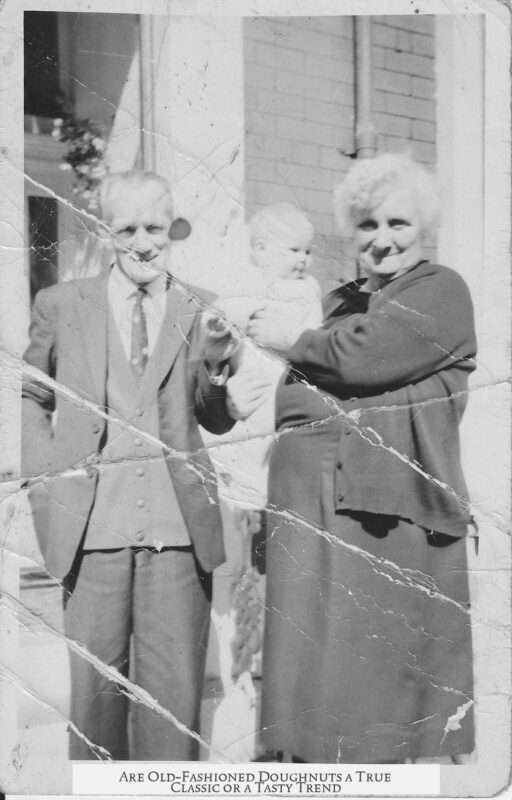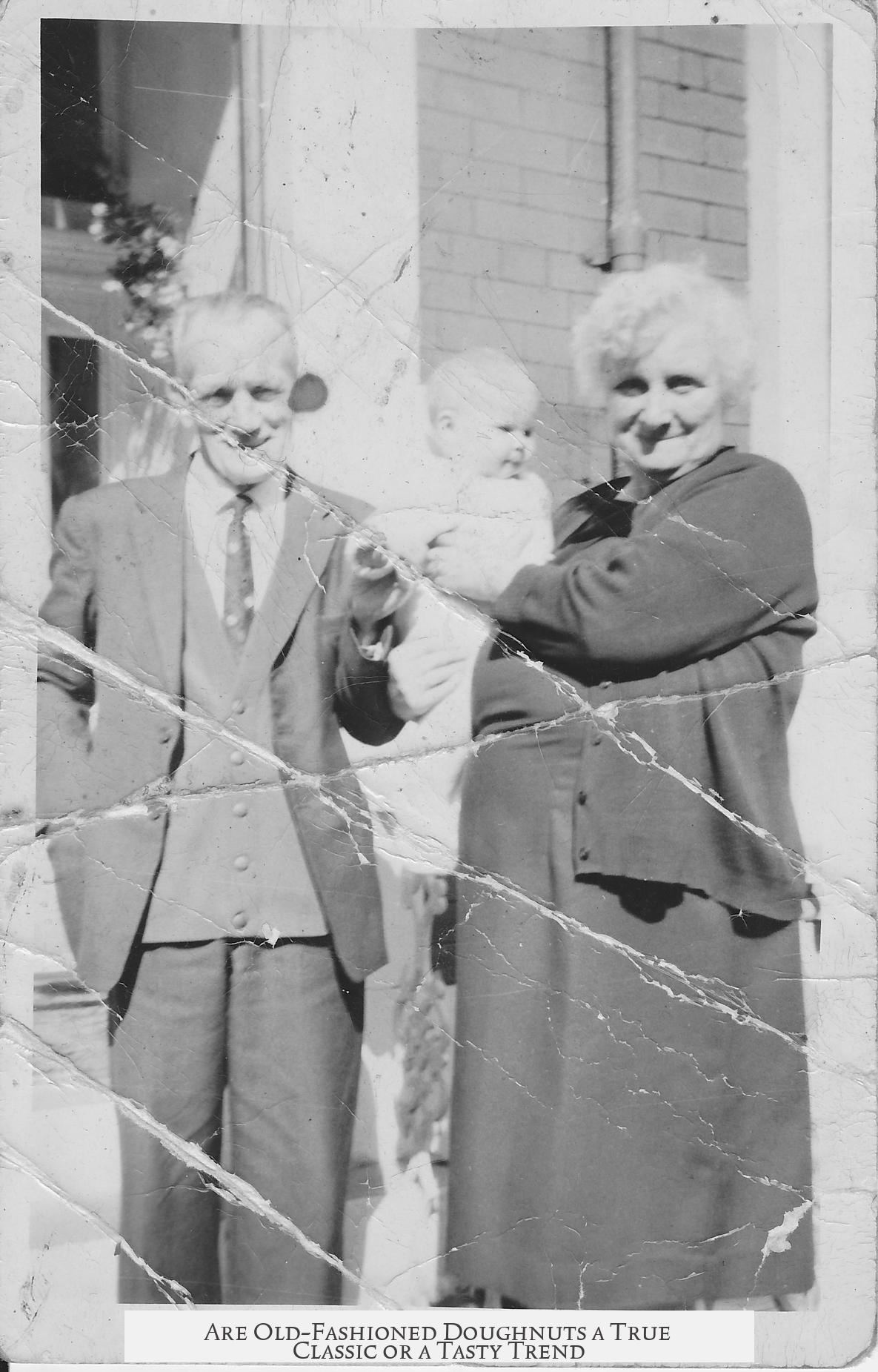Old-fashioned doughnuts are not truly old-fashioned in the historical sense. They represent a specific type of cake doughnut that gained popularity later than the original yeast-based doughnuts.
Old-fashioned doughnuts are a subset of cake doughnuts. They have a distinct appearance: a cracked, craggy surface with sides that splay out like flower petals. This look contrasts sharply with the smooth, rounded shape of modern yeast doughnuts. The name “old fashioned” comes from this cracked, rustic appearance, which possibly resembles the look of original Dutch oliekoeken or oliebollen.
Historically, the earliest doughnuts were yeast-based. The first recorded American mention appears in Washington Irving’s writing. He referred to doughnuts as an American name for Dutch “olykoeks” or oil cookies, which were yeast-risen. The yeast doughnuts produced a light, airy texture with large bubbles, different from today’s cake donuts.
Cake doughnuts emerged more recently. They appeared in U.S. cookbooks during the 1830s, coinciding with the commercial availability of baking soda and baking powder. These chemical leaveners allowed doughnuts to rise without yeast. Hence, cake doughnuts became a distinct American innovation.
The cake donut, including the old-fashioned type, gained national visibility during World War I. The Salvation Army served these doughnuts to soldiers in France, pairing them with coffee to give soldiers a taste of home. This effort was so successful that the YMCA and Red Cross also adopted the practice. The cake doughnut became a patriotic American snack at this time.
| Attribute | Yeast Doughnut | Cake Doughnut (Old-Fashioned) |
|---|---|---|
| Leavening Agent | Yeast | Baking soda/powder (chemical leaveners) |
| Texture | Light, airy, large bubbles | Dense, crumbly, fine crumb structure |
| Surface | Smooth, uniform | Cracked, craggy, rustic |
| Appearance | Rounded, often frosted | Uneven, browned edges, powder-coated or glazed |
Visually, yeast doughnuts often have a uniform ring shape, sometimes with an indentation from floating in oil during frying. Cake doughnuts, including old-fashioned, show rougher textures due to how they rise less smoothly.
The mid-20th century introduced mass production of doughnuts, which appears to have favored yeast doughnuts. Brands like Krispy Kreme, founded in 1937, began almost exclusively with yeast products and added cake doughnuts later. This may have helped shift consumer preference toward yeast doughnuts after World War II.
This shift likely influences the perception that old-fashioned doughnuts, a cake donut style, seem “old fashioned.” The yeast doughnut became a modern standard, making cake doughnuts appear outdated by contrast.
In summary:
- Old-fashioned doughnuts are a type of cake doughnut, identifiable by a cracked surface and puckered hole.
- Original doughnuts were yeast-based, resembling Dutch oliekoeks.
- Cake doughnuts arose in 19th-century America after the availability of chemical leaveners.
- World War I popularized cake doughnuts as a symbol of home for soldiers.
- Mass production and post-WWII consumer trends turned yeast doughnuts into the mainstream choice.
- Old-fashioned doughnuts appear old-fashioned because they differ from the widely consumed yeast varieties.
Are Old-Fashioned Doughnuts Truly Old-Fashioned?

The answer might surprise you: Old-fashioned doughnuts are called that not because they were the very first donuts ever made, but because their distinct look and texture remind us of an older style, even though they actually came after the original yeast donuts. Now, let’s break down why this is the case, and why the name “old-fashioned” is both fitting and a little misleading.
First off, there are two main families of doughnuts: yeast and cake. Understanding the difference between these two is key to unraveling the mystery behind that old-fashioned doughnut label.
Yeast vs. Cake Donuts: The Great Divide
Yeast donuts are the fluffy, light, airy gems. They puff up thanks to yeast, which ferments slowly, creating big bubbles inside. Think Boston creams or the popular glazed rings from places like Krispy Kreme. They often have a smooth texture and a little ring where they floated in hot oil.
Now, cake donuts—this is where the old-fashioned doughnut fits snugly. Cake donuts rely on chemical leaveners like baking powder or soda, making them heavier and crumbly. When you bite into one and ponder the crumbs on your shirt, you’re tasting a cake donut. Old-fashioned donuts are a special subtype of cake donuts, recognizable by their craggy, cracked surfaces and that slightly puckered hole that looks like it went through a wind tunnel.
So, if cake donuts are heavier and yeast donuts are airy, where do old-fashioned donuts fit? Simply put, an old-fashioned doughnut is a glazed cake donut with a cracked surface. That rugged look is the trademark.
A Trip Back in Time: The True History of Donuts
Despite the name “old-fashioned,” cake donuts—and therefore old-fashioned donuts—are not the original kind. They only appeared once chemical leaveners, like baking soda and baking powder, became available in the U.S. in the 1830s. Before that, donuts were all about yeast.
In fact, the earliest donuts we know of were yeast-based. The term “doughnut” was first recorded in America by Washington Irving, who mentioned “olykoeks,” Dutch oil cakes that were yeast-risen and deep-fried. These were likely brought by Dutch immigrants to New York, becoming the ancestors of American yeast donuts. Fascinatingly, the doughnut hole was invented later, in America, by a ship captain fed up with greasy, undercooked centers. He just cut out the middle—a genius solution, don’t you think?
Globally, the yeast fried dough tradition stretches far back. Ancient Romans fried sweetened dough strips, and Chinese and European cultures had their own versions—like Poland’s paczki and Italy’s zeppole.
The Cake Donut’s Rise and World War I Patriotism
Cake donuts came much later and are considered thoroughly American. Once baking soda and powder hit the scene, people jumped at the chance to make donuts without waiting for yeast to rise. This convenience turbocharged cake donut development.
When World War I rolled around, the Salvation Army served cake donuts to soldiers in France, offering a comforting taste of home. This gesture made the cake donut a patriotic symbol, embraced by the YMCA and Red Cross. So, while yeast donuts came first, cake donuts earned a respected place in American history and taste buds.
Why Are Old-Fashioned Donuts Called “Old-Fashioned”?

This is where the story gets fun. The name doesn’t mean these donuts date back to the earliest donut recipes. Instead, it’s all about appearance. Old-fashioned donuts have cracked, rough edges, very unlike the smooth, cloud-like yeast donuts that became popular mid-20th century. Their “weathered” look makes them seem like a throwback—more like the originale Dutch oliekoeks.
They are typically glazed but retain this rugged texture, with sides that sometimes splay out like petals. This visual sets them apart from the newer mass-produced yeast donuts that dominate donut shops today.
Mass Production and Changing Donut Tastes
In the 1930s to 1950s, donut production shifted towards mass production. Machines started making donuts at scale, and yeast donuts became more popular commercially. Krispy Kreme, founded in 1937, made yeast donuts exclusively at first, adding cake donuts much later.
While it’s unclear if machines preferred yeast or cake donuts, industry shifts mirror those in bagel-making, where mechanization changed traditional methods and products. Maybe yeast donuts were easier to produce consistently or perhaps the airy texture simply won public taste.
Post-World War II, yeast donuts surged in popularity. Cake donuts, including the old-fashioned type, came to feel like “retro” treats—comfort foods that evoke memories of an older, simpler America. This doesn’t diminish their taste or cultural value; in fact, it gives them a nostalgic charm.
So Are Old-Fashioned Donuts Truly Old-Fashioned?
Summing up, old-fashioned donuts are indeed “old-fashioned” in style and feel. They embody a look and texture that recall earlier fried cakes and hold an Americana vibe. However, the literal oldest donuts were light and yeasty. The old-fashioned cake donut emerged only after chemical leavening revolutionized baking.
Exploring this, you might ask: Why does texture matter so much? Why is crumbly different from fluffy something people actually care about? Because food memories root deeply in texture. The old-fashioned doughnut’s crumbly, cracked nature triggers nostalgia and contrasts the smooth yeast donut’s modern rise.
In essence, “old-fashioned” is a nod to tradition without being the original version. It’s a vintage look, a taste of past food innovation. The old-fashioned doughnut is a delicious echo of donut history, not the primordial donut itself.
Quick Tips for Telling Your Donuts Apart:
- Light and puffy donut with frosting? You’re holding a yeast donut.
- Heavy, crumbly, powdered sugar or glazed with cracks? That’s an old-fashioned cake donut.
- Does it have a smooth ring where it floated in oil? Most likely yeast.
- Cracked, splaying edges? Say hello to old-fashioned.
Now, next time you reach for an old-fashioned donut, you can savor it with the knowledge that it’s a classic treat born from chemical leaveners and a dash of Americana—wearing its name like a badge of honor, bridging history and flavor.




